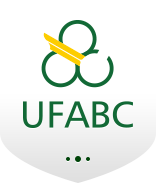Banca de DEFESA: AMANDA YUMI AMBRIOLA OKU
Uma banca de DEFESA de DOUTORADO foi cadastrada pelo programa.STUDENT : AMANDA YUMI AMBRIOLA OKU
DATE: 22/05/2023
TIME: 14:30
LOCAL: Por participação remota - Link da videochamada: https://meet.google.com/sin-sqto-gsz
TITLE:
Machine learning models and graph theory in Functional Near Infrared Spectroscopy data applied to STEM education
PAGES: 227
BIG AREA: Engenharias
AREA: Engenharia Biomédica
SUMMARY:
This work presents the use of the near-infrared functional spectroscopy (fNIRS) technique for educational research. The fNIRS technique allows the study of cognitive aspects involved in learning and the identification of patterns in brain activity. The study proposes new methods to analyze STEM (Science, Technology, Engineering and Mathematics) teaching data at different stages of education: early childhood education, basic education and higher education. For this, machine learning methods (Random Forest and Logistic Regression with LASSO) were used to predict the performance of higher education students in a virtual classroom and graph theory measures were also used to study the interactions between teachers and education students Basic and childish. Among the results obtained, it was observed that it is possible to detect levels of student engagement in tasks as well as to distinguish expository and interactive teaching methods in the interaction between students and teacher. These results allow affirming the need for more active methodologies for learning and evaluating the importance of teacher-student interaction.
COMMITTEE MEMBERS:
Presidente - Interno ao Programa - 1672975 - JOAO RICARDO SATO
Membro Titular - Examinador(a) Interno ao Programa - 1761107 - RICARDO SUYAMA
Membro Titular - Examinador(a) Externo ao Programa - 2353089 - KATERINA LUKASOVA
Membro Titular - Examinador(a) Externo à Instituição - DAVID KOHAN MARZAGÃO
Membro Titular - Examinador(a) Externo à Instituição - ROBERTO LENT - UFRJ
Membro Suplente - Examinador(a) Externo à Instituição - PRISCILLA OLIVEIRA SILVA BOMFIM - UFF
Membro Suplente - Examinador(a) Externo à Instituição - RAYMUNDO MACHADO DE AZEVEDO NETO - ICHIAE




